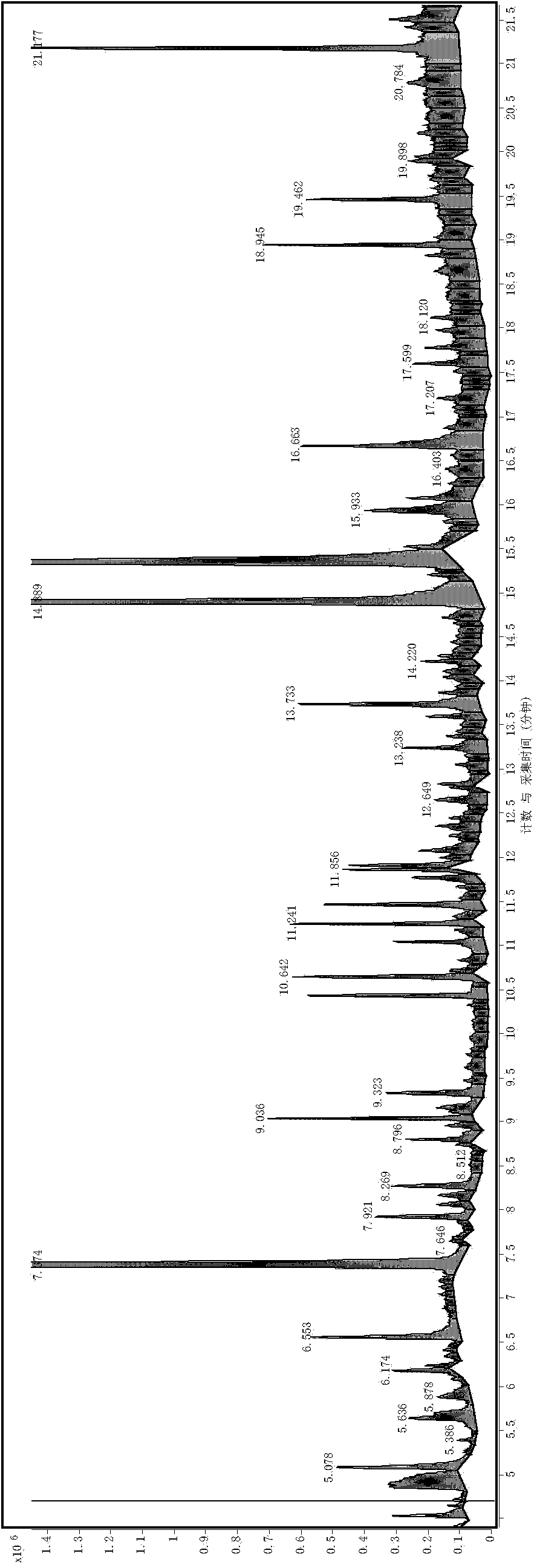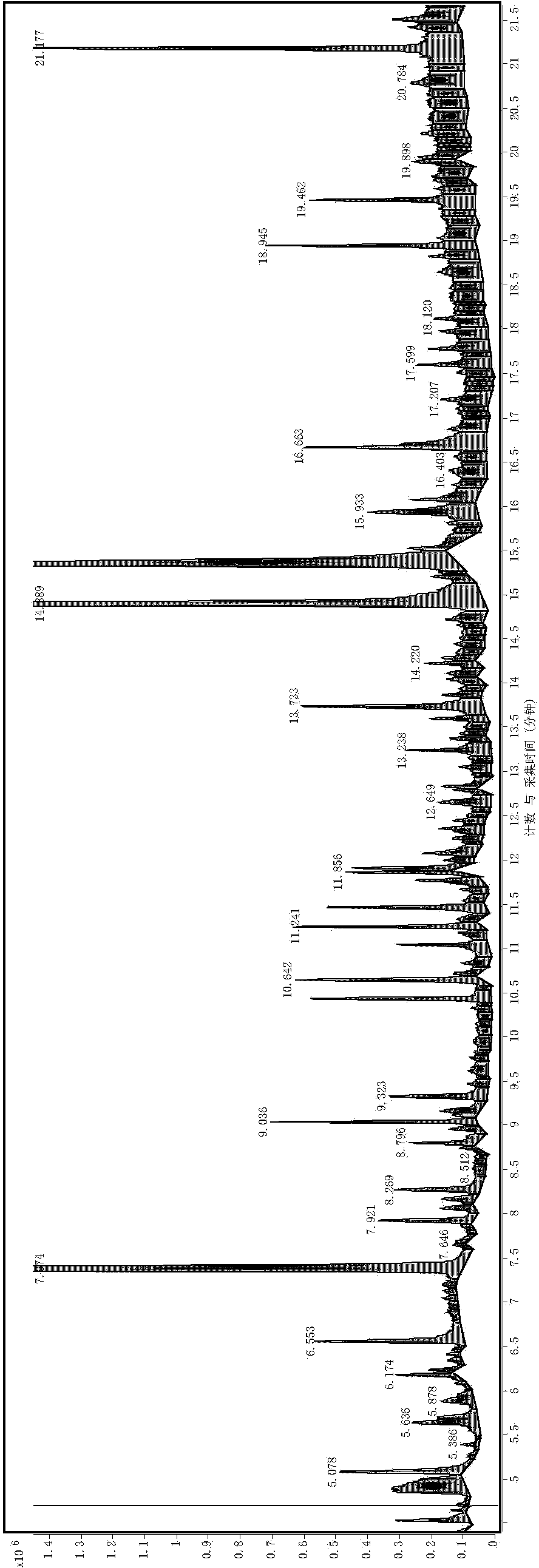Method for analyzing and discriminating odorous substances in drinking water
A discrimination method, a drinking water technology, applied in the analysis of materials, testing water, material separation, etc., can solve the problems of complex operation, large sample demand, low sensitivity, etc., and achieve wide application prospects, low consumption, and simple operation. Effect
- Summary
- Abstract
- Description
- Claims
- Application Information
AI Technical Summary
Problems solved by technology
Method used
Image
Examples
Embodiment 1
[0054] Example 1 Determination of odorous substances in drinking water in a certain place in the south (1) and sensory analysis verification
[0055] In order to strengthen the management of drinking water quality, eliminate the problem of drinking water odor complaints from consumers, and ensure the quality of drinking water is stable and controllable. The volatile components in drinking water were extracted by solid-phase microextraction, and then the key odorants were qualitatively and quantitatively analyzed by gas chromatography-smell-mass spectrometry.
[0056] 1. Materials
[0057] (1) sample
[0058] Somewhere in the South (1) Drinking water sample.
[0059] (2) Reagents and instruments
[0060] Among the standard reference compounds, except for tribromomethane, pyridine, triethylamine, camphorone and 2,4,5-trimethylthiazole which were purchased from Sinopharm Chemical Reagent Co., Ltd., other reagents were purchased from Sigma-Aldrich Company in the United States. ...
Embodiment 2
[0084] Example 2 Determination of odorous substances in drinking water in a certain place in the north (1) and sensory analysis verification
[0085] 1. Instruments and methods used
[0086] Except that the sample is a drinking water sample in a certain place (1) in the north, other parts are the same as the method used in Example 1, and GC-MS can be used to detect odorous substances in the water sample, and the total ion chromatogram (TIC) results are as follows: figure 2 As shown in , a total of 13 kinds of odorous substances were detected, including triethylamine (Triethylamine), dibromochloromethane (Dibromochloromethane), 2,4,5-trimethylthiazole (2 , 4,5-Trimethyl-thiazole), etc., wherein the odor characteristics of 13 peculiar smell substances and their contents in water samples are shown in Table 3 below.
[0087] Table 3 Odor substances in drinking water samples in a certain place in the north (1)
[0088]
[0089]2. The precision experiment mainly examines the p...
Embodiment 3
[0100] Example 3 Determination of odorous substances in drinking water in a certain place in the north (2) and sensory analysis verification
[0101] 1. Instruments and methods used:
[0102] The same as the instrument detection method used in Example 1, the sample is a drinking water sample from a certain place in the north (2), and the odorous substances in the water sample can be detected by GC-MS. The results of the total ion chromatogram (TIC) are as follows: image 3 As shown in Table 5, each odorous substance and its content are shown in Table 5.
[0103] Table 5 Odor substances in (2) drinking water samples in a certain place in the north
[0104]
[0105] 2. The precision experiment mainly examines the precision of the instrument. The same drinking water sample was taken, prepared according to the above pretreatment method and sample preparation method, and injected continuously for 3 times. The consistency of the relative content of odorants obtained by using ...
PUM
 Login to View More
Login to View More Abstract
Description
Claims
Application Information
 Login to View More
Login to View More - R&D
- Intellectual Property
- Life Sciences
- Materials
- Tech Scout
- Unparalleled Data Quality
- Higher Quality Content
- 60% Fewer Hallucinations
Browse by: Latest US Patents, China's latest patents, Technical Efficacy Thesaurus, Application Domain, Technology Topic, Popular Technical Reports.
© 2025 PatSnap. All rights reserved.Legal|Privacy policy|Modern Slavery Act Transparency Statement|Sitemap|About US| Contact US: help@patsnap.com



